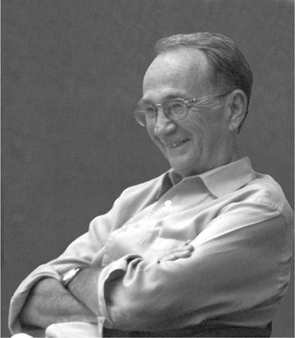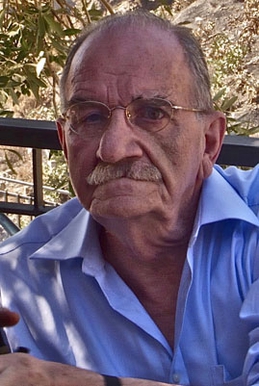Related Research Articles

Civil engineering is a professional engineering discipline that deals with the design, construction, and maintenance of the physical and naturally built environment, including public works such as roads, bridges, canals, dams, airports, sewage systems, pipelines, structural components of buildings, and railways.

Seismology is the scientific study of earthquakes and the propagation of elastic waves through the Earth or other planetary bodies. It also includes studies of earthquake environmental effects such as tsunamis as well as diverse seismic sources such as volcanic, tectonic, glacial, fluvial, oceanic, atmospheric, and artificial processes such as explosions. A related field that uses geology to infer information regarding past earthquakes is paleoseismology. A recording of Earth motion as a function of time is called a seismogram. A seismologist is a scientist who does research in seismology.

The Institution of Civil Engineers (ICE) is an independent professional association for civil engineers and a charitable body in the United Kingdom. Based in London, ICE has over 92,000 members, of whom three-quarters are located in the UK, while the rest are located in more than 150 other countries. The ICE aims to support the civil engineering profession by offering professional qualification, promoting education, maintaining professional ethics, and liaising with industry, academia and government. Under its commercial arm, it delivers training, recruitment, publishing and contract services. As a professional body, ICE aims to support and promote professional learning, managing professional ethics and safeguarding the status of engineers, and representing the interests of the profession in dealings with government, etc. It sets standards for membership of the body; works with industry and academia to progress engineering standards and advises on education and training curricula.

Robert Mallet was an Irish geophysicist, civil engineer, and inventor who distinguished himself by research concerning earthquakes. His son, Frederick Richard Mallet was a geologist who worked in India.

John Milne was a British geologist and mining engineer who worked on a horizontal seismograph.

Bruce Alan Bolt was an Australian-born American seismologist and a professor of earth and planetary science at the University of California, Berkeley. Professor Bolt was known as a pioneer of engineering seismology. He served for 15 years on the California Seismic Safety Commission leading public debate on earthquake safety in that state, and acted as a consultant on major projects throughout the world. As well, Bolt published a number of popular and technical books on seismology.
Applied mechanics is the branch of science concerned with the motion of any substance that can be experienced or perceived by humans without the help of instruments. In short, when mechanics concepts surpass being theoretical and are applied and executed, general mechanics becomes applied mechanics. It is this stark difference that makes applied mechanics an essential understanding for practical everyday life. It has numerous applications in a wide variety of fields and disciplines, including but not limited to structural engineering, astronomy, oceanography, meteorology, hydraulics, mechanical engineering, aerospace engineering, nanotechnology, structural design, earthquake engineering, fluid dynamics, planetary sciences, and other life sciences. Connecting research between numerous disciplines, applied mechanics plays an important role in both science and engineering.
James Anthony Jackson CBE FRS is Professor of Active Tectonics and head of Bullard Laboratories, Department of Earth Sciences, Cambridge University. He made his name in geophysics, using earthquake source seismology to examine how continents are deformed. His central research focus is to observe the active processes shaping our continents.
George W. Housner was a professor of earthquake engineering at the California Institute of Technology and National Medal of Science laureate.

Carl Allin Cornell was an American civil engineer, researcher, and professor who made important contributions to reliability theory and earthquake engineering and, along with Luis Esteva, developed the field of probabilistic seismic hazard analysis by publishing the seminal document of the field in 1968.
Sarada Kanta Sarma is a geotechnical engineer, emeritus reader of engineering seismology and senior research investigator at Imperial College London. He has developed a method of seismic slope stability analysis which is named after him, the Sarma method.

The Department of Civil and Environmental Engineering is the academic department at Imperial College London dedicated to civil engineering. It is located at the South Kensington Campus in London, along Imperial College Road. The department is currently a part of the college's Faculty of Engineering, which was formed in 2001 when Imperial College restructured. The department has consistently ranked within the top five on the QS World University Rankings in recent years.
In geophysics, geology, civil engineering, and related disciplines, seismic noise is a generic name for a relatively persistent vibration of the ground, due to a multitude of causes, that is often a non-interpretable or unwanted component of signals recorded by seismometers.
Michel Soto Chalhoub is a civil engineer who pioneered modern practice in shock, vibration, and seismic design using energy dissipating devices [ref]. He developed his methodologies while at the University of California, Berkeley, where he earned his Ph.D. in dynamics and seismic design.

Nicholas Neocles Ambraseys FICE FREng was a Greek engineering seismologist. He was emeritus professor of engineering seismology and senior research fellow at Imperial College London. For many years Ambraseys was considered the leading figure and an authority in earthquake engineering and seismology in Europe.
Thomas Paulay was a Hungarian-New Zealand earthquake engineer.
Professor Roy Thomas Severn CBE DSc PhD FREng FICE was a British civil engineer and earthquake engineering expert. Severn studied mathematics at Imperial College London and achieved a doctorate in civil engineering based upon his work on the design of Dukan Dam. After completing his National Service he accepted a position as lecturer in civil engineering at the University of Bristol, where he would spend the rest of his career. Severn specialised in earthquake engineering and established the Earthquake Engineering Research Centre at the university which became one of the foremost institutions in the world within the field. He served as pro-vice chancellor of the university and as president of the Institution of Civil Engineers.
Eduardo Kausel is a Chilean-born, American engineering scientist who has made significant contributions in the fields of soil dynamics, structural dynamics, wave propagation, and engineering mechanics.
Seismic intensity scales categorize the intensity or severity of ground shaking (quaking) at a given location, such as resulting from an earthquake. They are distinguished from seismic magnitude scales, which measure the magnitude or overall strength of an earthquake, which may, or perhaps may not, cause perceptible shaking.
Mustafa Erdik is a Turkish professor emeritus who is a former faculty member of the Middle East Technical University and Boğaziçi University. He is the president of the Turkish Earthquake Foundation, and his studies are concerned with strong-motion characterization, earthquake hazard and risk assessment.
References
- 1 2 3 "Home". SECED. Retrieved 11 December 2017.
- ↑ "Society for Earthquake and Civil Engineering Dynamics (SECED)". Prevention Web. Retrieved 11 December 2017.
- ↑ "SECED 2015 Conference". Jill Rogers Associates. Retrieved 11 December 2017.
- 1 2 Bulletin of the Seismological Society of America, Vol.77, No.2, pp.688-689, April 1987. Archive copy
- 1 2 "Nicholas Neocles Ambraseys 1929–2012". Journal of Earthquake Engineering. 17 (3): 301–303. 2013. doi:10.1080/13632469.2013.772011.
- 1 2 3 Campbell, Andy (May 2016). "The fifteenth Mallet–Milne lecture". Bulletin of Earthquake Engineering . 14 (5): 1333–1336. doi: 10.1007/s10518-016-9869-8 .
- ↑ "The sixteenth Mallet-Milne lecture - Dealing with Earthquakes: Earthquake engineering as if people mattered, London". Institution of Civil Engineers. 24 May 2017. Retrieved 11 December 2017.